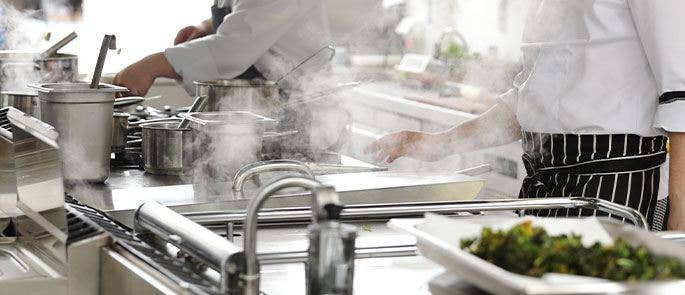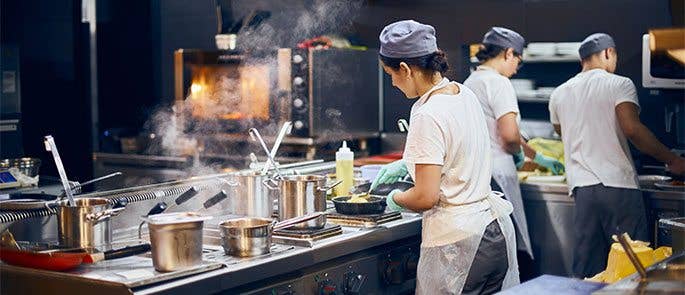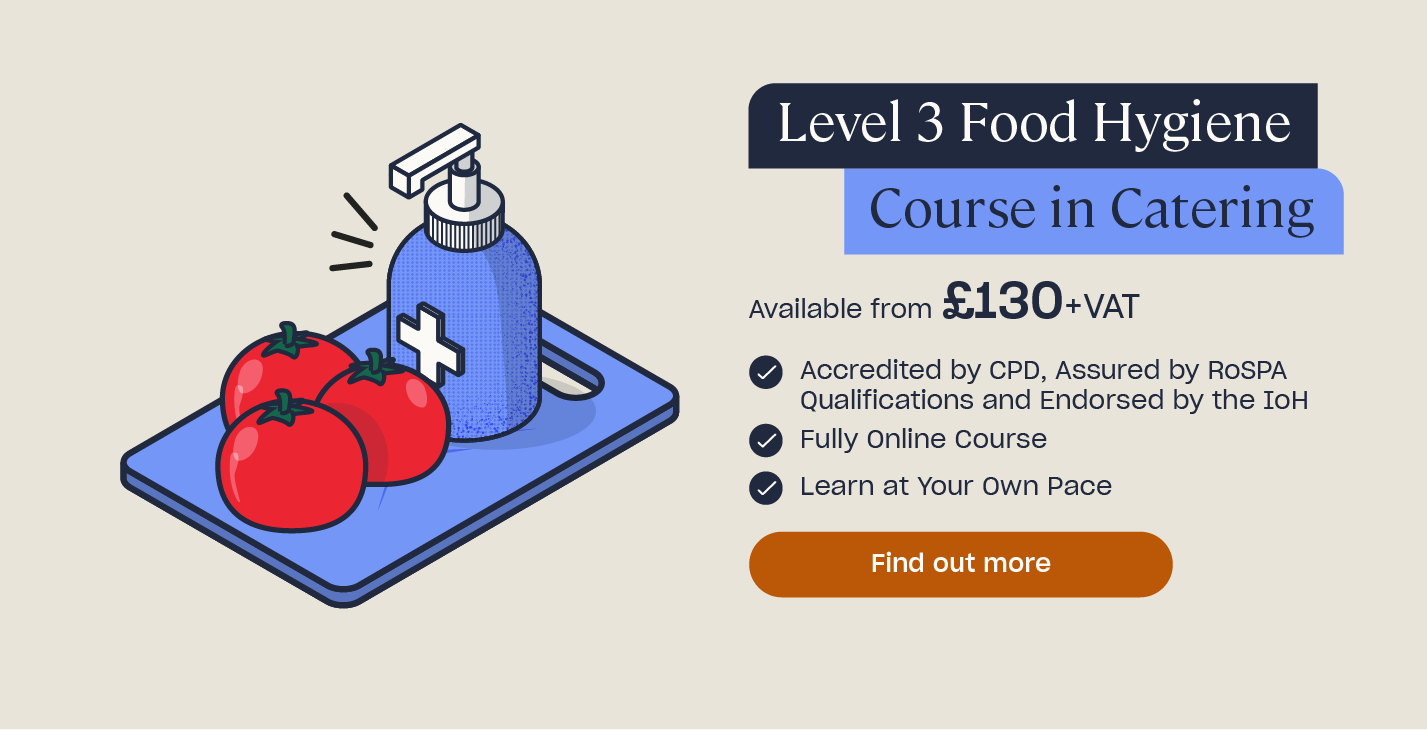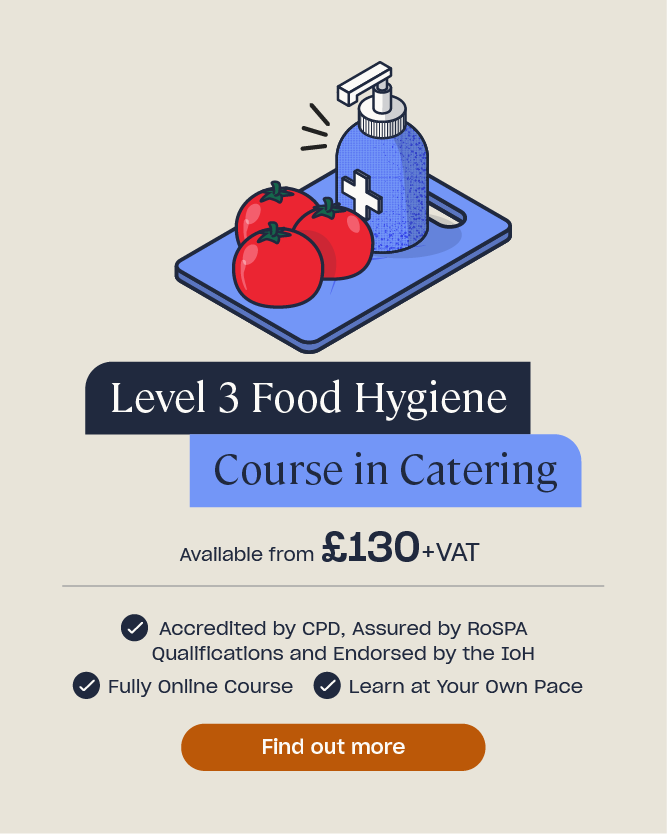Guidance on Ventilation in Commercial Kitchens
Commercial kitchens cook copious amounts of food on a daily basis and as a result they generate large quantities of vapour and heat that must be managed. Proper ventilation is crucial as it removes these fumes and safely redirects them. Commercial kitchens are subject to extraction regulations to ensure and maintain the health and safety of all employees. These regulations are vital to keeping everyone safe and food businesses legally compliant. In this article we will discuss the ventilation requirements for commercial kitchens and discuss why kitchen ventilation is so important.
What are the Commercial Kitchen Extraction Regulations?
Commercial kitchens must legally have efficient extraction in place. If you are in charge of running a commercial kitchen you must ensure that you adhere to extraction regulations. There are three key pieces of legislation regarding kitchen ventilation.
The Workplace (Health, Safety and Welfare) Regulations 1992 – Under these regulations employers must provide effective and suitable ventilation in every enclosed workplace. This includes kitchens as they need ventilation in order to create a safe and comfortable working environment.
Gas Safety (Installation and Use) Regulations 1998 – These regulations impose further requirements and apply to gas appliances that are commonly found in commercial kitchens. Some appliances may require a flue in order to be compliant, which is a duct that removes smoke, vapours and heat produced by fires or gas cookers.
The Health and Safety at Work etc. Act 1974 – This act places duties on employers to ensure they are providing a work environment that is safe to work in and does not pose a risk to employee health. Inadequate ventilation can create an unsafe work environment and subsequently pose a risk to employee health.
Is it Illegal to Work in a Kitchen Without Ventilation?
Yes, it is illegal to work in a kitchen without ventilation. As shown above, an employer and/or food business operator (FBO) has various mandatory responsibilities to provide a safe working environment. Working in a kitchen without ventilation is unsafe and indicates an employer’s failure to comply with the necessary legislation. Non-compliance with kitchen ventilation regulations can lead to fines, business closure and even criminal prosecution.

Why is Kitchen Ventilation Important?
Kitchen ventilation is important as it keeps employees safe and is a legal requirement. According to the Health and Safety Executive (HSE), the objectives of an effective kitchen ventilation system are to:
- Remove cooking fumes at source, i.e. at the appliance.
- Remove excess hot air and bring in cool, clean air so the working environment is comfortable (inadequate ventilation can cause lethargy and heat stress contributing to unsafe systems of work).
- Make sure that the air movement in the kitchen does not cause discomfort e.g. from strong draughts.
- Provide enough air for complete combustion at fire appliances and prevent the risk of carbon monoxide accumulating.
- Be easy to clean, avoiding build-up of fat residues and blocked air inlets which lead to loss of efficiency and increased risk of fire.
- Be quiet and vibration free.
Kitchen ventilation has important practical benefits that create a safe working environment. This in turn, supports employees and customers by:
- Reducing the likelihood of employees experiencing irritation to the eyes or skin or developing respiratory problems as a result of continuously breathing in fumes.
- Keeping employees at a comfortable temperature, ensuring they are less likely to be dissatisfied in the workplace due to their environment. Inadequate systems can cause stress which may result in high staff turnover.
- Preventing a build-up of fumes and other airborne particles.
- Ensuring air quality is high for both employees and customers who may be sitting/dining near the kitchen area and therefore subjected to unwanted vapours and heat if there is inadequate ventilation.
- Preventing grease from building up and posing a food safety risk by unhygienically gathering on the walls and ceilings.
Additional Considerations
As shown above, kitchen ventilation is important for the health and safety of employees and customers alike and i is an integral part of creating a safe working environment. In order to be effective, your kitchen ventilation system must suit the needs of your particular kitchen. As such, when designing or selecting a ventilation system for your kitchen the HSE advises that you consider the following:
- Cooking load
- Amount of cooking equipment used
- Layout and shape of the kitchen
- Number of staff
- Need for easy cleaning and maintenance
Remember, extraction systems must be effectively cleaned and maintained to ensure they work properly and continue to keep premises well ventilated. If they are not cleaned regularly then grease and fat can build up and block air inlets, making the system less effective and increasing the risk of fire. Staff should be trained so that they can confidently clean any ventilation systems that you have installed and you should also use a credible external contractor for regular deep cleans.
As mentioned above, some gas appliances may require a flue in order to be compliant with the relevant gas safety regulations. As a flue requires an interlocking system that connects the airflow to the gas supply, you must ensure this is in place and maintained properly to keep employees safe at all times. You should also consider how your ventilation and extraction system will affect the use of gas appliances in the kitchen.
Types of Kitchen Ventilation
There are two main ventilation methods and two main types of ventilation systems that are used in commercial kitchens. The method and system that you choose to use will depend on the needs of your kitchen and should factor in the variables mentioned above.
The two methods of ventilation are:
- Natural ventilation – this relies on doors, windows and other openings such as trickle vents, air bricks or grilles to provide air.
- Mechanical ventilation – this uses fans to move air into and out of rooms. In small spaces these may be in the room, however in larger buildings it’s likely to be a network of ducts and fans that blow clean air into rooms and/or extract stale air. It’s worth noting that the HSE strongly advises against the use of freestanding fans as a means of mechanical ventilation as they can spread microorganisms, disrupt the efficiency of an extraction system and create a trip hazard.

The two main types of ventilation system used in commercial kitchens are:
- Kitchen canopies – these work by drawing grease, fumes and hot air away from the working environment and are often found directly above appliances such as an oven.
- Ceiling ventilation – these work by drawing in stale air and releasing fresh clean air. They utilise blades to pull in large volumes of air which is then circulated around a space.
The HSE recommends mechanical extraction via a canopy hood that is installed over cooking appliances. This enables fumes to be removed and discharged to a safe location. Many kitchens will use canopies and ceiling ventilation in tandem depending on their individual needs. There are numerous different types of commercial kitchen canopies available that can be manufactured to suit any type of kitchen.
Commercial kitchens produce significant amounts of fumes and vapours whilst simultaneously generating large amounts of heat. This must be managed in order to keep employees safe and businesses legally compliant. Protecting your employees from undue harm in the workplace should be a top priority. As such, it’s crucial that you have adequate ventilation and extraction systems in place to ensure a safe working environment for all.
Further Resources:
- Fridge and Freezer Temperature Log Sheets for Kitchens
- Using a FIFO Food Storage System
- Food Hygiene Courses











